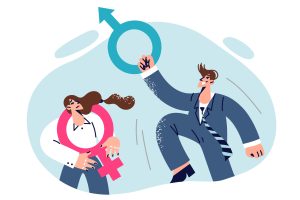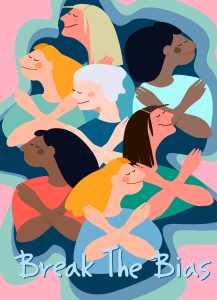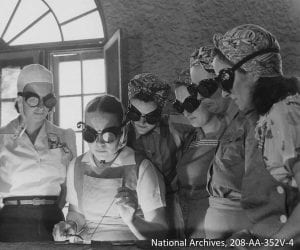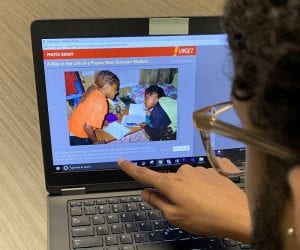Every summer Population Education is fortunate to host interns from around the U.S. These students bring their talents and passions to the PopEd program by completing a wide variety of projects. The following blog was written by one of PopEd’s 2025 summer interns.

Gender bias within the education system affects girls’ learning experiences and long-term opportunities. Even when girls are able to attend school, biased practices and environments often prevent them from achieving equal outcomes and realizing their full potential. This bias appears in teaching practices, curriculum content, and school environments, perpetuating inequities that can impair girls’ full academic and personal development.
And gender inequality within education contributes to continued disparities across workplace and political spheres.
The Impact of Unconscious Gender Bias in the Classroom
Teachers often hold unconscious gendered expectations that shape interactions and evaluations. Research shows that teachers may encourage boys more in math and science, giving them more challenging tasks, while girls receive more praise for neatness and behavior rather than intellectual contributions. Boys are typically encouraged to be vocal and take risks in class, whereas girls are more likely to be socialized towards quietness and compliance. This dynamic can marginalize girls’ participation and reduce their confidence in asserting themselves academically, impacting their long-term engagement and self-esteem.
Gender Bias in the Curriculum
Educational content frequently reflects traditional gender stereotypes. Textbooks and curricula often highlight male achievements while underrepresenting women’s contributions, particularly in the areas of history, science, and leadership. Additionally, even today, males are often shown as breadwinners, leaders, and in high-powered, high-paid roles, whereas females are more often portrayed as caretakers and in more nurturing roles like nursing and education. Girls who do not see female role models in their studies can feel a diminished sense of belonging and less motivated to pursue traditionally male-dominated fields. A gender equal curriculum should highlight the diversity of society, with examples of successful females in all instructional materials including textbooks, handbooks, worksheets, and literature.
Gender Bias in the Workforce

Globally, women make up only 35 percent of students enrolled in STEM fields in higher education and just 20 percent of science and engineering professionals are women. Gender bias in education is a big contributor to this inequity in STEM enrollment and involvement.
Gender imbalances are perpetuated in the workforce even when girls perform well in subjects like math and science. A lack of encouragement and subtle biases discourage many females from pursuing higher studies or careers in STEM and leadership. Additionally, continual exposure to these biases harms girls’ self-esteem and willingness to take intellectual risks, with lasting effects on their academic performance and professional confidence.
The Long-term Societal Consequences of Gender Bias

The persistent gender bias within educational environments not only hinders individual girls but also restricts societal progress by limiting diversity in innovation, leadership, and economic participation. It also reduces diverse perspectives in key fields. This exclusion weakens economic growth and social progress because societies miss out on the full potential of half their population.
Addressing Gender Bias in Education
Key findings from educational research and gender equity analyses emphasize how biases embedded in teaching methods, curricula, and school cultures negatively affect girls’ educational experiences, beyond simply attending school.
To create equitable learning environments, educators and institutions must revise curricula to include diverse female role models and non-stereotypical representations across subjects. Teacher training programs need to raise awareness of unconscious gender biases and offer equitable encouragement and evaluation of all students. Addressing these hidden inequities is essential to realizing true gender equality in education and beyond.
Image credits: Gender equality illustration (ID 1880811626 © Denis Novikov | iStockphoto.com); U.S. Army USA-GB by Kayla Overton, Public domain, via Wikimedia Commons; Engineer Andrea Tischler being recognized by U.S. Army Garrison Bavaria during Women’s History Month (U.S. Army USA-GB by Kayla Overton, Public domain, via Wikimedia Commons); Break the bias illustration (ID 1372311067 © Svetlana Piatigorskaia | iStockphoto.com)




